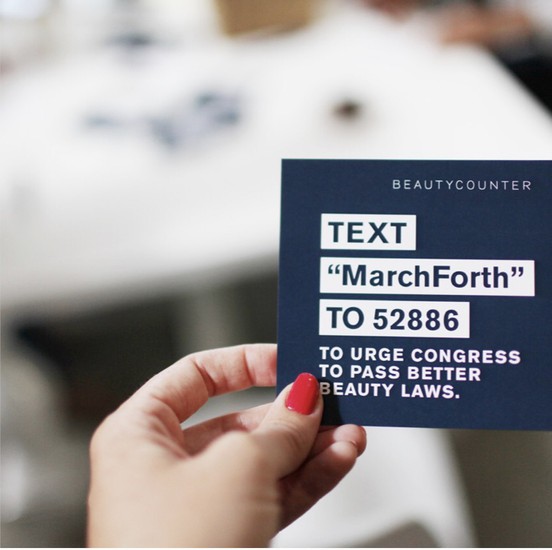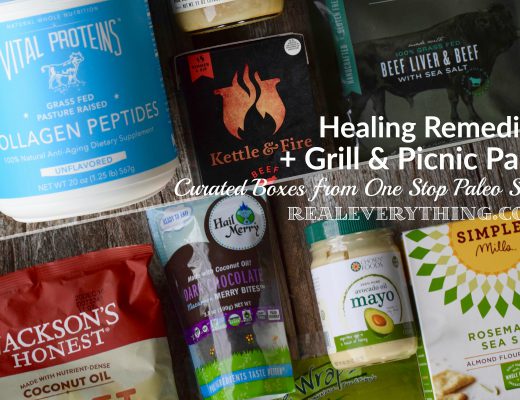You may not know this, but my day job is leading a compliance-based department of a Government consulting firm; I read, understand, and apply Federal regulation for a living. My mind was blown by this newly published NIH paper, “State of Evidence 2017” because it referenced things I understand – not PubMed articles but the US Code! Further, yesterday the CEO of Beautycounter mentioned companies being allowed to to put “natural” or “paraben-free” on their product labels regardless of the truth to that when she was here in DC. I wanted to use my expertise to to see if it was true, understand why, and to help others be educated and empowered to protect themselves. So let me calm down my super excited jazz-hands and share what I now know! ♥
There’s always skeptics, but with Breast Cancer Awareness Month upon us – let me assure you, our lifestyles are killing us. And we can change that. From skincare, cosmetics, hair care, cleaning products, detergents, and air fresheners to mini blinds, plastic storage containers, hormonal birth control, Teflon/nonstick pans, pesticides, herbicides, shower curtains, vinyl flooring… we surround ourselves with plasticides, parabens and phthalates. This 2017 scientific-based NIH publication calls out our environment and assures us it is giving us breast cancer.
It was a good reminder, for even me, on what and why we remove this stuff from our lives. I cringe to think of my youth and what I exposed myself to as a teen or – even worse for a mom – all the plastic bags I stores my breast milk in and then reheated… but I can’t change the past. I’m glad we are focusing and learning now.
If you have friends or family that are impacted by cancer or even hormone disruption in general, I encourage you to share this. One of the easiest and highest impact places to start is to avoid PARABENS and PHTHALATES which are found most often in personal care/skincare/cosmetics.
Abstract
Singly and in combination, these toxicants may have contributed significantly to the increasing rates of breast cancer observed over the past several decades. Exposures early in development from gestation through adolescence and early adulthood are particularly of concern as they re-shape the program of genetic, epigenetic and physiological processes in the developing mammary system, leading to an increased risk for developing breast cancer. In the 8 years since we last published a comprehensive review of the relevant literature, hundreds of new papers have appeared supporting this link, and in this update, the evidence on this topic is more extensive and of better quality than that previously available.
Conclusion
Increasing evidence from epidemiological studies, as well as a better understanding of mechanisms linking toxicants with development of breast cancer, all reinforce the conclusion that exposures to these substances – many of which are found in common, everyday products and byproducts – may lead to increased risk of developing breast cancer. Moving forward, attention to methodological limitations, especially in relevant epidemiological and animal models, will need to be addressed to allow clearer and more direct connections to be evaluated.
Read the full study here: https://www.ncbi.nlm.nih.gov/pmc/articles/PMC5581466/
Is your “Natural” product, actually?
Further, what commitment do the companies you buy “natural non-toxic” products from guarantee you? Did you know that no regulation has been passed since 1938 on hygiene products? While appalling on a number of levels, what this means is that companies can “greenwash.” They can put “paraben-free” or “natural” or “non-toxic” on the package and it means nothing – literally, they can lie. As long as it doesn’t violate the FDA regulations… you know, the ones from 1938:
FDA’s primary responsiblities for regulating cosmetics include ensuring that cosmetics are not adulterated or misbranded (as defined in 21 U.S.C. §§361, 362; Federal Food, Drug, and Cosmetic Act (FFDCA) §§601, 6). [source]
A cosmetic shall be deemed to be adulterated—
(a) If it bears or contains any poisonous or deleterious substance which may render it injurious to users under the conditions of use prescribed in the labeling thereof, or under such conditions of use as are customary or usual, except that this provision shall not apply to coal-tar hair dye, the label of which bears the following legend conspicuously displayed thereon: “Caution—This product contains ingredients which may cause skin irritation on certain individuals and a preliminary test according to accompanying directions should first be made. This product must not be used for dyeing the eyelashes or eyebrows; to do so may cause blindness.”, and the labeling of which bears adequate directions for such preliminary testing. For the purposes of this paragraph and paragraph (e) the term “hair dye” shall not include eyelash dyes or eyebrow dyes.
(b) If it consists in whole or in part of any filthy, putrid, or decomposed substance.
(c) If it has been prepared, packed, or held under insanitary conditions whereby it may have become contaminated with filth, or whereby it may have been rendered injurious to health.
(d) If its container is composed, in whole or in part, of any poisonous or deleterious substance which may render the contents injurious to health.
(e) If it is not a hair dye and it is, or it bears or contains, a color additive which is unsafe within the meaning of section 379e(a) of this title.
(June 25, 1938, ch. 675, § 601, 52 Stat. 1054; Pub. L. 86–618, title I, § 102(c)(1), July 12, 1960, 74 Stat. 398; Pub. L. 102–571, title I, § 107(11), Oct. 29, 1992, 106 Stat. 4499; Pub. L. 103–80, § 3(x), Aug. 13, 1993, 107 Stat. 778.) [source]
Let Me Break It Down
For most of you, that looks a lot like the instructions for when you do your taxes. I get it.
The FDA Regulation of Cosmetics and Personal Care Products paper (cited first) states FDA’s primary responsibilities are to uphold the US Code, which is the “how to” of the 1938 Food, Drug, and Cosmetic Act. The code says FDA only get involved to regulate where any of these circumstances apply, but what do they really mean?
- (a) If it bears or contains any poisonous or deleterious substance which may render it injurious to users under the conditions of use prescribed in the labeling – i.e. unless the product contains a known, defined “poison” which would physically harm someone to use as defined, then they don’t care. So your lipstick doesn’t tell you to eat it, therefore ingestion of toxic metals – they don’t care. Parabens and phthalates and even plasticides, like BPA, while known hormone disruptors, they’re not poison – so again, not within their purview.
- (b) If it consists in whole or in part of any filthy, putrid, or decomposed substance – i.e. they’ll jump in when e coli is in your spinach.
- (c) If it has been prepared, packed, or held under insanitary conditions whereby it may have become contaminated with filth, or whereby it may have been rendered injurious to health. – i.e. if they think that e coli is coming from a manufacturing process they’ll jump in.
- (d) If its container is composed, in whole or in part, of any poisonous or deleterious substance which may render the contents injurious to health. – i.e. oh look, another “poison” word that means only those defined (as noted in example a)
which of course haven’t been because large companies lobby in order to use cheap formulas. /politicalrant
- (e) If it is not a hair dye and it is, or it bears or contains, a color additive which is unsafe within the meaning of section 379e(a) of this title. – i.e. alright, we’re actually getting somewhere here! Color addatives are something the FDA watches out for, since it references 379(a) which is another section of the code, found here.
So I thought maybe there was something FDA was able to buckle down on when I looked up 379(a). However, there’s a whole long list of stuff that it would be able to regulate, except that a singular person (who is appointed by and a member of the President’s cabinet, in this case we’ve already had 5 in 2017) is able to allow any “color additives” (even those within the prohibited list) as long as he or she determines it to be “consistent with the public health” then it’s totes fine. The Code actually offers a lot of opportunities for better regulation, especially as it relates to cancer risk. Unfortunately, it’s peppered with “if found by the Secretary” which makes things subjective for one person who is susceptible to influence.
Don’t believe me? We’ll even change the code for companies that lobby to create frankenfish (by feeding them color food to change their meat color, that’s totally normal, right?). Or how about making exceptions for drug-companies that then also allow the same substances to be used for any purpose. I could go on and on, but my eyes are already tired from all the rolling to the back of my head each time I open a new tab on my browser.
I want safer.
Listen, I get that as a community we want the freedom to make informed choices. And for most of us educated consumers that works well. What doesn’t work well is that companies take advantage of those not knowledgeable or able to financially protect themselves, those who shop for their personal care products in the dollar section of stores. Those companies manufacture if foreign countries to escape the rules of environmental protection and only ensure they follow the very narrow and limited rules above in order to escape FDA involvement.
I for one expect more. The EU banned 1400 harmful substances a decade ago because science supported protected their people. In that same time frame the US has increased our banned 19 by ELEVEN to a whopping 30 (vs 1400 – get me here?). I want better. I’m texting Text “BetterBeauty” to 52886 to ask all of our members of Congress for better beauty laws; you can too.
The push for better regulation has been bubbling; this article in September 2016 references the Personal Care Products Safety Act introduced in 2015. Last night I heard Gregg Renfrew talk about the progress still being pushed on that through the Counteract Coalition.
Despite its booming growth, the cosmetics industry in the US has been virtually unregulated. The Food, Drug, and Cosmetic Act, adopted in 1938, essentially allowed personal care product companies to self-police. But rising public concern over bad reactions to makeup, hair dyes, and fragrances, as well as evidence of long-term health risks from some of their chemical contents, has led lawmakers to try to toughen the regulatory framework for the $60 billion enhancement industry. [source]
What other brand starts a coalition to petition congress for MORE regulation in the field they’re in? The company is that invested in making an impact on a huge industry affecting all of our health and bringing in like-minded companies, like 7th Generation, to help them push this forward. Progress takes time, and watching it happen is incredible.
Education and advocacy are what we’ve always focused on here on the blog – from parenting, ADHD, paleo foods, and now personal care – we want to empower you to be the informed consumer. What I’ve learned this past year is how much I didn’t know about the factors affecting my health and well being – inside and out. I haven’t yet talked about this, but I recently found a leg of my family previously unknown (my mom was adopted) and nearly every single direct relatives had cancer. I want to be here for my kids’ kids and maybe even great-grand-children. That’s why this matters to me, and I hope I’ve helped you realize why it matters to you, too.

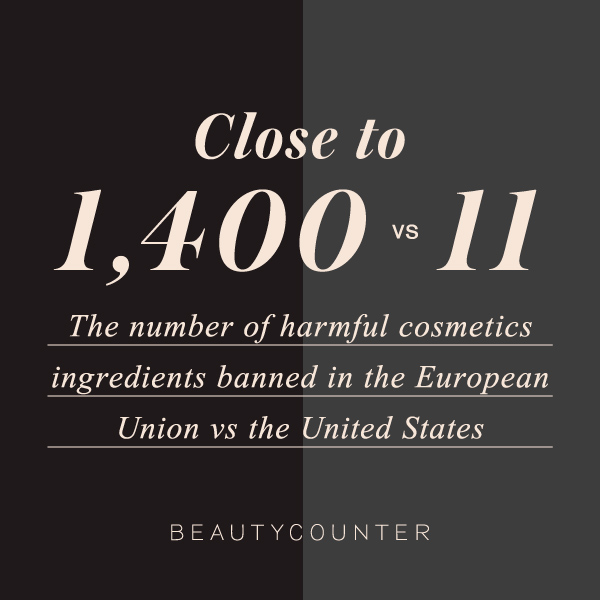
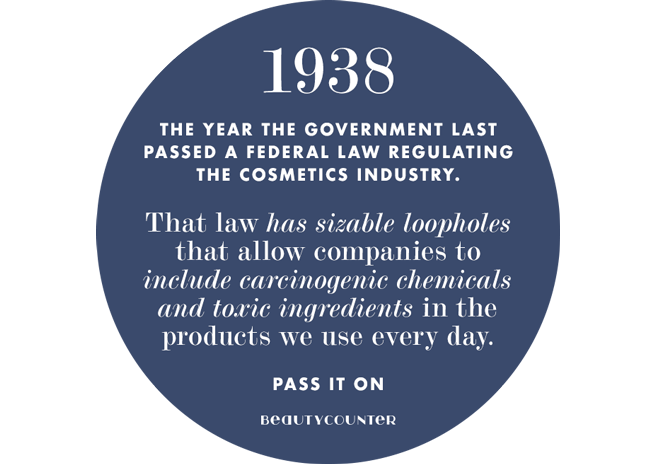
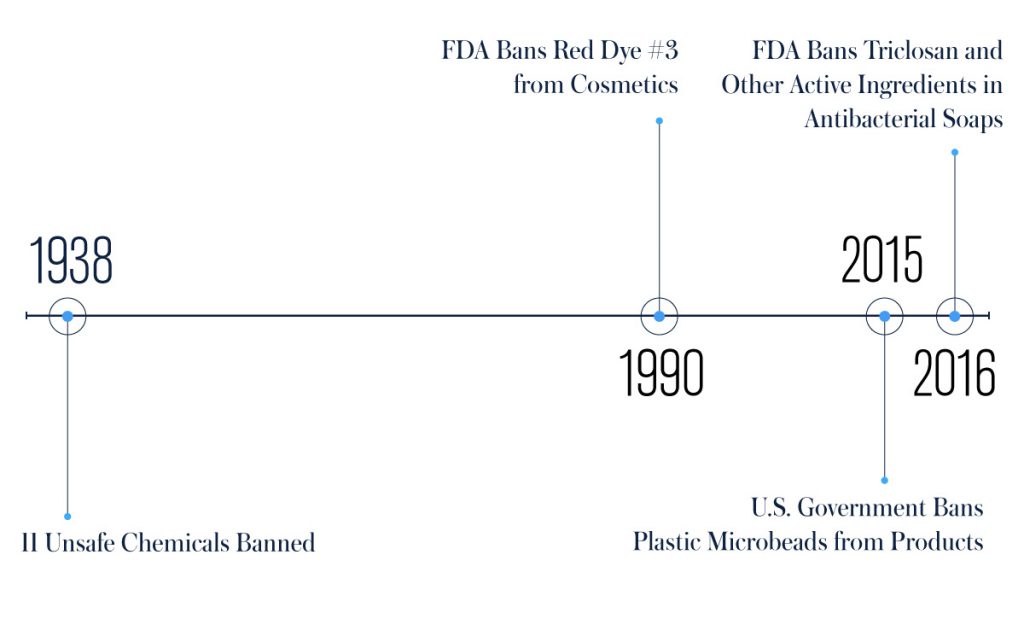 click image for source
click image for source